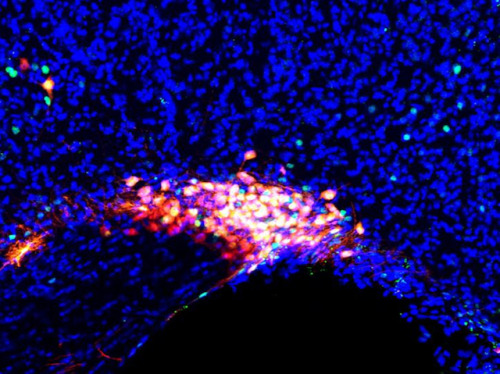
Anatomy of Anaesthesia
Despite general anaesthetics having been used since the middle of the 19th century, doctors have never known the exact mechanism by which they work. A prevailing notion was that the drugs led to a widespread shutting down of brain cell activity. But recent work shows that there’s also a key part of the brain that general anaesthetics activate: the supraoptic nucleus – a cluster of hormone secreting cells (stained red in the slice of mouse brain pictured). By using a genetic technique that allows cells to be instantly stimulated by light (optogenetics), researchers found that activating this cell cluster caused awake mice to stop moving and fall into a deep sleep akin to unconsciousness. Elimination of the cells, by contrast, prevented sleep. The identification of this anatomical mediator of general anaesthetics could lead to the development of better drugs – for both anaesthesia and sleep – with fewer unpleasant side effects.
Written by Ruth Williams
- Image from work by Li-Feng Jiang-Xie and Luping Yin, and colleagues, Duke University
- Department of Neurobiology, Duke University Medical Center, Durham, NC, USA
- Image copyright held by the original authors
- Research published in Neuron, April 2019
You can also follow BPoD on Instagram, Twitter and Facebook
Archive link



Комментариев нет:
Отправить комментарий